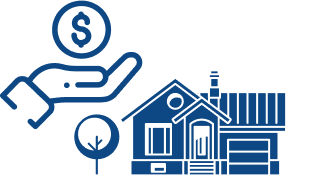Rents are following the increases in the real estate market and rose 16% year over year. This national price jump found renters discontented, and according to a Realtor.com survey, 66% of them blame rent jumps for their financial hardships. Rents have been rising continuously each month since January, and they will most likely keep growing.
The median monthly rent in the US surpassed $1,800, but some housing professionals estimate that the median national rent will rise to $,2000 by the end of summer. Just shy of a 16% increase are two-bedroom and one-bedroom units, but the highest demand is for studio apartments. The increased demand for downtown studios is reflected in the highest year-over-year price increase of 17.2%.
As the world is settling into a new post-pandemic normal, people are coming back to the offices and want to live closer to their workstations. The rebirth of commuting adds more pressure to the price of apartment rentals.
Highest Rent Surge Is in the Sun Belt States
Rents have gone up everywhere, but some places have seen increases higher than others. The metro areas in the Sun Belt states have more than a median increase percentile. For example, the median rent in Orlando rose 33% YOY, and in Tampa 27% for the same period. Florida is not the only state to have rent increases higher than 20%; Texas and Nevada face the same problem.
These states have been a popular domestic migration destination for telecommuters and people who wanted to avoid crowds. Additionally, housing markets in the Sun Belt were an ideal investment or second-house opportunity. This influx of people made it harder for locals to compete, and it rippled to the rentals.
Although the Sun Belt has the highest increase, the highest rates are still in the tech centers and in major coastal cities. New York and Boston lead the way on the East Coast, while Austin, Texas has the highest rents in the South.
Southern California Rental Market
SoCal has always been a higher-housing-cost area, but living costs were comparable in the Bay Area. However, numbers show that San Diego surpassed every other city on the West Coast when it comes to rental prices. Chula Vista and Oceanside saw the highest rental increases in the county, with the 1-bedroom median price higher than $2,300 and the 2-bedroom median price around $3,000 a month.
Many renters have faced financial difficulties because of the steep increase in rent. San Diego residents are paying $300 more than last month, and some landlords show no mercy, for they can find new renters very quickly. Downtown LA rentals are facing a historic number of bidding wars because of the low supply and the comeback of those who abruptly left when the pandemic started.
College Grads Struggling
All renters are feeling the increases, but some groups are more affected than others. Low-earning households are struggling to pay their rent, families with multiple children are having trouble finding affordable and spacious housing, and reports show that college grads have a very tough time due to rent increases.
Undoubtedly, the starting salary has risen substantially in the past decade, and today it stands above $55,000. However, it didn’t increase as fast as the rent. While the median starting salary for college graduates advanced by 14% since 2010, rent is 16% higher than it was just a year ago.
People are seeking other means of affordable housing, so those who are still single or couples that don’t have children turn to apartment-sharing. Some reports show that housemate-finding platforms saw almost 50% increased activities on their websites, compared to the same time last year.
House-sharing is a cheaper option that provides an opportunity to save up, and maybe afford to buy a property in the future. However, this is not a sustainable solution for many millennials and older Gen Zs who are looking to build wealth and have a sense of security.
SELL
YOUR HOUSE
If you want to sell fast and are worried about how long the traditional process takes, and the commission and fees involved, consider working with SleeveUp Homes.





 view all blogs by this author
view all blogs by this author Zachariah Peterson (69 blogs)
Zachariah Peterson (69 blogs)